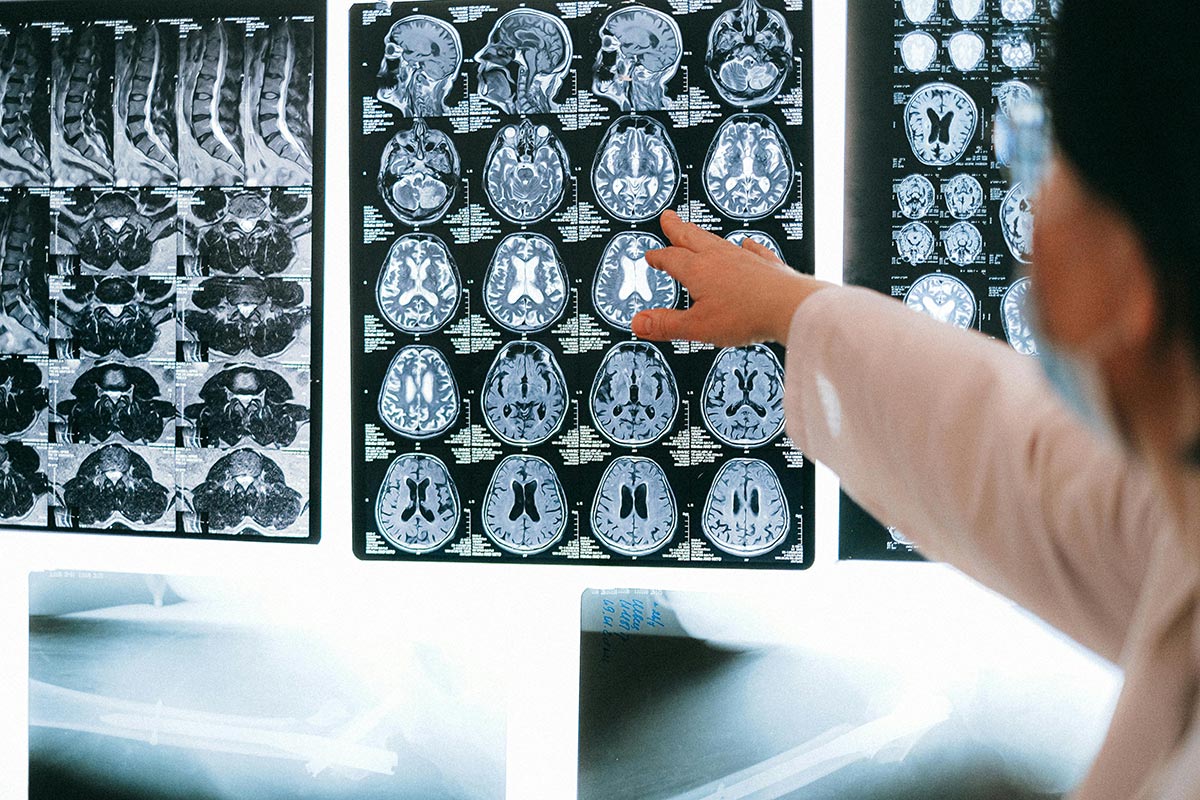
The Critical Role of Early Detection in Health Management
In today's healthcare landscape, early detection emerges as a pivotal strategy for managing and preventing serious health issues. It holds the potential to transform patient outcomes, reduce healthcare costs, and improve quality of life. By identifying conditions at their inception, medical professionals can employ timely interventions that are often less complex and more effective. This narrative explores the multifaceted benefits and challenges of early detection across various diseases, shedding light on its critical role in contemporary and preventative healthcare.
The Benefits and Mechanisms of Early Detection

What are the benefits of early detection?
Early detection offers numerous advantages that significantly impact patient outcomes. Primarily, it improves the likelihood of benefiting from available treatments, often resulting in better survival rates and enhanced quality of life. For instance, early-stage cancer diagnoses can translate into dramatically higher survival rates. The 5-year survival rate for patients diagnosed at stage 1 breast cancer is 97.9%, compared to only 26.2% at stage 4.
This proactive approach allows individuals to manage their health conditions more effectively, thereby prioritizing their health needs. It also contributes to reducing anxiety surrounding health concerns, providing peace of mind not just for patients but also for their families. By addressing potential health issues early, patients can maximize quality time with loved ones.
Mechanisms like screenings and assessments
Screenings and routine health assessments play a crucial role in facilitating early detection. Regular check-ups and diagnostic tests, such as mammograms, colonoscopies, and blood tests, help identify health problems before they escalate into serious conditions. For example, colorectal cancer screening can identify the disease at a stage where treatment is most effective.
Moreover, advanced imaging technologies like MRI and CT scans help detect irregularities even before symptoms manifest, paving the way for timely intervention. The World Health Organization (WHO) notes that 30-50% of cancer cases could be prevented through early detection and intervention strategies.
Statistical impact of early detection
The statistical evidence supporting early detection is compelling. With regular screenings for chronic diseases, healthcare providers can identify risk factors such as high blood pressure and diabetes, allowing for timely management.
Many studies emphasize how early diagnosis significantly enhances treatment outcomes. For example, identifying lung cancer early can result in a 5-year survival rate of 61%, compared to only 6% in advanced-stage diagnoses. Additionally, effective early detection not only enhances health outcomes but also significantly reduces long-term healthcare costs, ultimately relieving both patients and the healthcare system.
The Life-Saving Potential of Early Cancer Detection

Why is early cancer detection important?
Early cancer detection is vital because it significantly improves the chances of successful treatment and can reduce mortality rates. When cancer is diagnosed early, patients have access to more effective therapies, which can lead to higher survival rates. For instance, breast cancer diagnosed at stage 1 has a 5-year survival rate of 97.9%, compared to just 27% for those diagnosed at stage 4. These statistics emphasize the critical need for proactive screening methods, such as mammograms and Pap smears, which can identify cancers in asymptomatic individuals before they progress into more serious conditions.
Impact on survival rates
The impact of early cancer detection cannot be overstated. Delays in diagnosis can lead to more advanced disease stages, complicating treatment efforts and increasing healthcare costs. Research indicates that early diagnosis can lead to significant reductions in mortality rates. For example, lung cancer’s 5-year survival rate drops from 61% when detected early to a mere 6% if diagnosed later. Thus, enhancing public awareness of cancer symptoms and the accessibility of screening programs is critical in increasing early detection rates.
Challenges and strategies in cancer screening
Despite its importance, several challenges exist in the realm of early cancer detection, including public awareness deficits, insufficient training for healthcare providers, and financial barriers that limit access to screening services. To overcome these obstacles, health systems must invest in optimizing screening processes and enhancing patient education. Strategies such as organized screening programs targeted at high-risk populations and increased availability of diagnostic services can significantly improve recognition of potential health issues. By addressing these barriers, we can enhance cancer outcomes, ultimately reducing the global impact of this disease, which claimed an estimated 9.6 million lives in 2018 alone.
The Multifaceted Role of Early Detection in Disease Management

What role does early detection play in disease management?
Early detection is pivotal in disease management, significantly improving treatment outcomes for various health conditions. By diagnosing diseases at an early stage, healthcare providers can initiate timely interventions, allowing treatments to be more effective and resulting in higher survival rates. For instance, early-stage breast cancer has a five-year survival rate that exceeds 97%, while late-stage detection drops it dramatically to just over 26%.
Reducing healthcare costs
Addressing issues before they escalate into serious health problems not only enhances patient outcomes but also drives down healthcare costs. The prevention of advanced diseases, which often require complex and expensive treatment options, can lead to substantial savings. Chronic conditions, which account for 90% of U.S. healthcare expenditure, underline the financial burden that early detection can alleviate by mitigating the need for costly interventions once diseases have progressed.
Public health implications
effective early detection strategies play a crucial role in public health as well. Timely diagnosis can limit the spread of infectious diseases, ultimately leading to reduced societal and economic impacts. It fosters community awareness regarding health issues, encouraging a culture of preventative care. Regular screenings, like those for cervical and colorectal cancers, serve as cornerstones of public health strategies aimed at maintaining population health while ensuring that individuals receive appropriate care. In a broader sense, early detection embodies not only health benefits for individuals but also essential gains for society at large, enhancing overall well-being.
Balancing the Benefits and Challenges of Early Detection

Ethical Considerations
Early detection is a powerful tool in healthcare, yet it raises significant ethical questions. The possibility of false positives can lead to unnecessary stress and invasive procedures that might be avoided. Furthermore, the awareness of being at higher risk for certain diseases can cause anxiety, potentially affecting mental health and behavior.
Potential Downsides like Overdiagnosis
Not every health issue necessitates a race for early detection. Certain slow-developing diseases might not require immediate treatment when they show no symptoms. This can lead to conditions such as overdiagnosis, where patients may receive labels or treatments for conditions that may never have affected them. These unnecessary interventions can result in anxiety and prevent individuals from focusing on their overall well-being.
Contextual Application
The effectiveness of early detection varies with the disease context. For instance, while timely screenings can drastically improve outcomes in cancers like breast and cervical, conditions such as rheumatoid arthritis may have different response patterns. A personalized approach evaluating individual risks and symptoms is vital.
Is Early Detection Always the Best Prevention Strategy?
Not necessarily. While early detection is crucial for some conditions, it can be counterproductive for others. Conditions that progress slowly or have little to no early symptoms can sometimes be managed without early intervention. The aim should be a balanced method, considering individual health before implementing widespread early detection strategies.
Evidence and Policy: Fueling Early Detection Initiatives

Why is early detection of health issues important?
Early detection of health issues is crucial because it increases the chances of effective treatment and can lead to better patient outcomes. Identifying diseases early, such as cancer or diabetes, allows for timely interventions that can cure or control the illness before it progresses. Moreover, early detection helps reduce mortality rates and lowers healthcare costs, enhancing the quality of life for those affected.
Preventive approaches are essential for public health as they also curb the spread of infectious diseases and improve management of chronic illnesses. Nonetheless, challenges like access to healthcare services and societal stigma can pose significant barriers to effective early detection initiatives.
Does early detection save lives?
Yes, early detection does save lives, particularly concerning cancer. Numerous studies have shown that detecting cancer at an early stage significantly increases survival rates, with treatments being more effective and less intensive. For example, screening programs for breast, cervical, colorectal, and lung cancers have lowered mortality rates; early detection is associated with five-year survival rates exceeding 90% in many cases.
Despite the clear benefits, challenges such as limited access to screening and the risks of overdiagnosis need careful consideration. Overall, effective early diagnosis and robust screening initiatives are vital public health strategies to enhance cancer outcomes and decrease mortality.
| Evidence | Impact | Challenges |
|---|---|---|
| Early detection linked to 90%+ survival rates in cancers | Improved treatment outcomes and quality of life | Access disparities, societal stigma, overdiagnosis risks |
| Screening saves lives through timely interventions | Decreased mortality rates | Logistical barriers and lack of provider training |
The Path Forward for Early Detection
The significance of early detection in preventing serious health issues cannot be overstated. While it holds great promise in saving lives, enhancing quality of life, and reducing healthcare costs, it is crucial to navigate its challenges thoughtfully. Balancing the benefits with potential downsides and ethical considerations will ensure that early detection serves its purpose effectively. Ongoing advancements in diagnostic technologies, coupled with well-informed policies, will be instrumental in fortifying early detection efforts, ultimately leading to healthier populations and more sustainable healthcare systems.
References
- Are early detection and treatment always best? - Harvard Health
- The Importance of Preventive Healthcare - Early detection - ezra Scan
- Early detection and prevention - PMC
- Promoting cancer early diagnosis - World Health Organization (WHO)
- The Importance of Early Detection - Jupiter Medical Center
- The Role of Primary Care in Early Detection and Intervention for ...
- The Importance of Early Detection in Disease Management
.svg)





